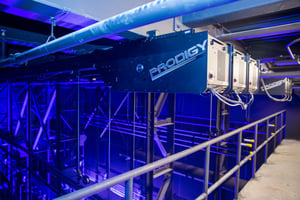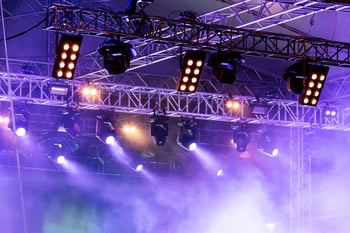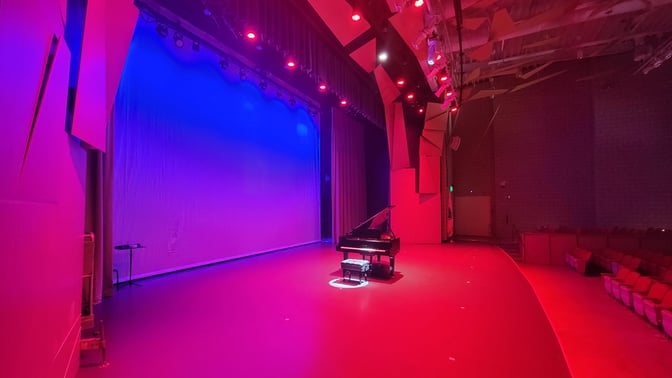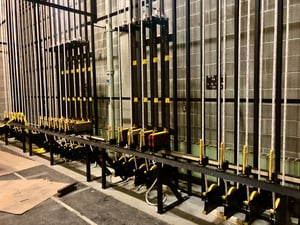Share this
by PORT on Oct 31, 2022 8:00:00 AM
Motorized Rigging
While more expensive than counterweighted systems, motorized rigging requires less stage space and less structural steel. Most motorized, automated rigging sets used in theater productions are “dead haul” sets. This means that the motor lifts the entire weight of the equipment, without counterbalancing, which eliminates the safety concerns that come with improperly balanced sets and handling heavy weights.
 In addition, with automated rigging, stagehands can physically or digitally lock the controls so an unauthorized operator can’t use them. Motorized rigging systems are excellent when you need to move heavy, multi-element sets quickly and accurately. They allow you to program these movements for precise cues, timing, and consistent performances.
In addition, with automated rigging, stagehands can physically or digitally lock the controls so an unauthorized operator can’t use them. Motorized rigging systems are excellent when you need to move heavy, multi-element sets quickly and accurately. They allow you to program these movements for precise cues, timing, and consistent performances.
At PORT, we primarily use ETC Prodigy motorized hoists because they are affordable and user-friendly due to their easy-to-read displays and simple controls. Prodigy motorized hoists are lightweight and use compression tube technology, which allows us to connect them to a structure with fewer brackets. That also means you can use them to retrofit spaces that aren’t designed for a stage machinery system.
PORT – Customized Theatrical Rigging
In business since 1985, PORT designs and installs customized theatrical rigging for every type of venue. When you work with our highly skilled team, you’ll be confident we will construct and install everything correctly and safely. In addition to theatrical rigging and lighting, our services include:

Read about our recent project installing ETC Prodigy motorized hoists at Phillips Exeter Academy’s Goel Center for Theater and Dance. Want to learn more about how we can enhance your venue? Contact us today!



.jpg?width=300&height=175&name=Dead%20Hung%20Rigging%20(1).jpg)


No Comments Yet
Let us know what you think